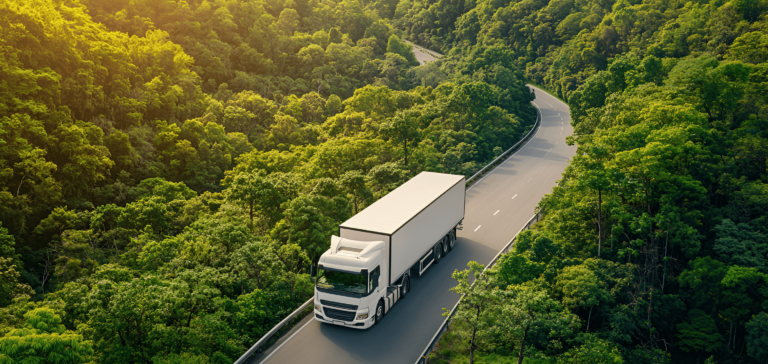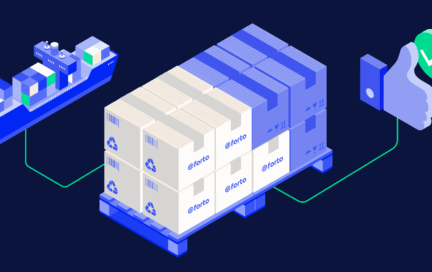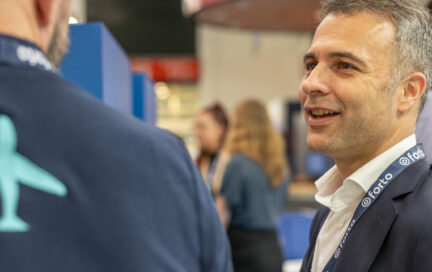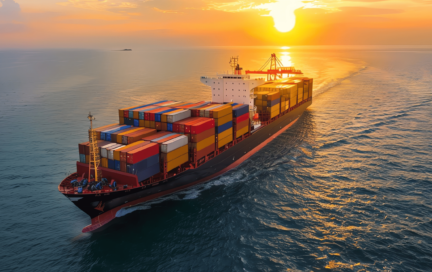How To Save on Time and Cost For Freight Transport While Helping the Environment
In our latest interview, we chat with Robin Knopf, CEO of SAT Albatros (SAT), a leading provider of Sea-Air solutions based in Dubai. The company offers hybrid transport from Asia to Europe, Africa and the Americas.
Ocean freight shipments arrive in Dubai where goods are transloaded within 8-12 hours and then flown by air for the next leg of transport.
An alternate solution to pure air or ocean, we learn more about the time and cost savings Sea-Air provides, the eco-friendliness it offers to the global transportation industry and more.
A bit of background and why logistics/forwarding as a career?
Robin: I represent the second generation of the Knopf family running SAT. My father founded SAT in Stuttgart, Germany in 1984 and handed over the CEO position in 2015. Prior to that, I received my bachelor’s degree in International Business Administration, worked with Kuehne & Nagel in Germany, and in a startup within the finance sector in Berlin, London and New York.
At SAT, we are always looking to innovate further and establish new alternative transport combinations, while at the same time expanding our expertise and value of Sea-Air.
What is Sea-Air and what are its benefits?
Robin: Sea-Air transport is just that, a combination of sea freight and airfreight, which is faster than pure ocean, cheaper than pure air freight, and more eco-friendly. SAT acts as a neutral carrier for Sea-Air. This means we offer our service to forwarders and final customers directly, and provide “non-stop” transport from Asia to Europe, Africa, and the Americas.
We believe the most favourable Sea-Air routing is via Dubai because it is the most effective, providing the perfect balance of time and cost.
On average, Sea-Air provides a 30% cost saving compared to Air and 50% time saving compared to Sea.
What factors go into arranging a sea-air solution versus a regular air or sea option?
Primarily, the time advantage over sea and the cost advantage over regular air are the key factors to use Sea-Air. If you miss an ocean freight departure by a few days, there is no reason to use direct air with a transit time of 3-5 days because you simply don’t need the cargo so early!
Instead of letting your cargo collect dust in your warehouse, you can use a sea-air service that gets you the cargo in time – and still saves you cost. More customers are conscious of and concerned about their CO2 footprint. By using Sea-Air over regular air, they can reduce up to 45% carbon emissions.
There are also operational advantages. Switching from ocean to air requires a change of documentation – this requirement does not exist for Sea-Air as the cargo still moves out via ocean service on its first leg as originally planned.
Do you see the Silk Road Rail initiative as a threat or opportunity to the Sea/Air option?
Robin: We welcome innovation that challenge traditional business models. We see an appetite from customers for services between traditional ocean and air transport.
However, you will also find different modes of transport with different speeds. From Ocean to Rail, to Sea-Air, to deferred and express air, customers have many options to choose from.
As we see more customers changing their supply chains to make use of the different modes, we see a growing interest in Sea-Air as well. South-East-Asia, where we see huge volumes of garments, electronics and automotive parts, and is far off the Silk Road rail tracks, is a booming market for us.
No matter which mode you use, it needs to be reliable, sustainable, and delivers what it promises (in reality, not on paper!)
Describe the Middle East in terms of logistics benefits for shippers, forwarders and carriers. What is the outlook for the Middle East in terms of logistics opportunities?
Robin: The Sea-Air concept is not only about combining ocean and air. The local infrastructure at the transit point is key to a successful operation. Losing several days at the transit point has a negative impact to the time advantage over pure sea freight.
The Middle East, and especially Dubai, has a large geographical advantage; and is an important region linking Asia to Europe. What’s more important is the availability of good local infrastructure, customs transparency and network coverage, all of which contribute towards a successful operation, which in turn creates value for the customer.
In this respect, the Middle East has done an incredible job in the last two to three decades. The seamless connection between the port and airport is outstanding; capacity, network and frequency of airfreight uplift is unrivalled in the market. Plus, the new Airport Dubai World Central (probably the biggest project in the aviation industry) is right at our doorstep.
Looking forward, I am sure this development will continue to keep Dubai and the Middle East as a key logistics hub worldwide.
How can shippers, forwarders and carriers build stronger relationships?
Robin: By making performance measures fair, transparent, and mandatory; and by working together to providing outstanding solutions to shippers. I think shippers can also help to grow partnerships with commitment, trust, and support.
What value does a forwarder provide for shippers? For carriers?
Robin: Forwarders can make the lives of shippers much easier by better understanding their needs, giving them access to bigger buying power, and creating additional value by combining several services in a seamless way. The reality is that the transport industry is lacking technological innovation, and systems are too diversified, which makes it extremely difficult to run one platform for the shipper.
How important is technology/automation to your business?
Robin: I believe that our industry gets more complicated every year. To make the most out of available resources, unused space and empty legs, information is key.
The load of information is exploding, so much so that we need technology to cope with it and transform it into manageable pieces that can create value for our customers.
Companies that use big data very well, such as Amazon, have an advantage. They are able to anticipate customer demands and are already sending products on their way into regional distribution centres before a customer has even ordered them.
But I still believe that the human factor needs to be able to overrule any automation process. Technology should help us make better decisions, not make all decisions by default.
As a company, we see massive potential to become more efficient in our processes and reduce our cost to serve the client.
The logistics industry is largely dependent on human interactions. As we automate low-value tasks, we expect to have more time for the important human interactions.
We need to be conscious of the fact that many of our customers are using technology in their private lives and are therefore open to it in a business environment too.
Who would have thought that any customer would self-check-in for a flight, effectively reducing the airlines’ workload, and yet they are enjoying even greater customer experience by doing so?
What is the biggest problem your industry needs to solve?
Robin: I think digitisation is a challenge, but it will also bring the biggest benefit to our complex logistics industry.
We can only make smart decisions and generate cost savings if we have the technology in place for it. As an example, we need data and information to take advantage of unutilised space.
This data first needs to be captured and available in the right way. To do that, the industry needs to upgrade systems and technology – not something that can be done overnight.
Furthermore, it is not sufficient to have just one company invest to become truly digital. All stakeholders within the chain need to be truly digital too. So an element of analogue work will still be there.
To overcome that hurdle and raise all the industry players to a standard will be a massive task. It will require investment, cooperation and forward thinking, which not every player is open to.
Probably the second largest challenge is bringing the market back to a reasonable level of freight rates. The industry has been suffering from self-inflicted pain with decreasing freight rates in both ocean and air. This has been a win-lose game between shippers and carriers for far too long.
In the past years, carriers and forwarders have been reckless with freight rates to gain market share. Almost all carriers are now forced to take drastic actions to stop their bleeding. These could include unreasonable decisions, which will create a lot of frustrations and even severely damage the shipper – forwarder – carrier relations.
What advice would you give to someone hoping to enter your field?
Robin: You would need to come away from the mindset, process, and language of regular air and ocean services. The Sea-Air operations is complex – double the trouble of ocean and air.
Additionally, customers expect a wide network coverage from Pakistan up to Japan, which means you need to have a base load from all origin ports to support an economic, yet reliable service.
Without a base load, you could move a small shipment via LCL, which may compromise your service reliability. Alternatively, you could move it via FCL to keep the service level, but the cost to serve will be too high.
The business and margins are too small to invest into, yet the complexity of the service requires so much attention. With this, forwarders have to make a decision – to make or buy. Quite often, the service is better utilised if it is operated by a specialist like SAT Albatros.
Wrapping Up
Transportation options continue to increase. No longer is the choice between just air or ocean for global freight transport. A combination of both can bring significant time and cost savings to shippers, and help reduce carbon emissions. We thank Robin for taking the time to chat with us. To learn more about SAT Albatros, please visit their website as well as their LinkedIn page for the latest updates on Sea-Air sector.







